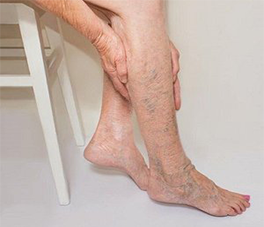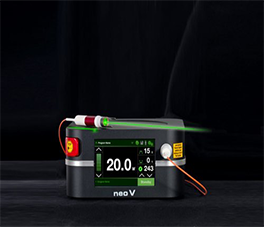Chronic Wounds


A chronic wound is one that has failed to progress through the phases of healing in an orderly and timely fashion and has shown no significant progress toward healing in 30 days.
Chronic wounds are typically identified by a raised, hyperproliferative, yet non-advancing wound margin. The area around the wound will be inflamed and this inflammation may be affect healing negatively.
Types of chronic wounds may include, but are not limited to the following etiologies: venous ulcers, diabetic ulcers, and pressure ulcers.
Venous ulcers occur primarily in the legs of patients and are caused by problems with blood circulation due to dysfunctional blood valves or obstructed veins.
Diabetic ulcers often start as small scratches or bruises which patients with diabetes fail to notice due to nerve damage and limited sensitivity. Compromised immune systems and damaged capillaries lead to these formerly small and benign wounds becoming dangerously infected.
Pressure ulcers primarily afflict patients who are bedridden or of limited mobility. The constant pressure on the tissue over powers the pressure of the capillaries, affecting blood flow. Areas at the greatest risk for pressure ulcers are the sacrum, shoulder blades and heels. Correctly identifying the cause of a chronic wound as well as the local and systemic factors that may be contributing to poor wound healing is critical to successful wound treatment.

There are several factors that can increase a patient's risk of developing a chronic wound. Bariatric patients and those with diabetes or venous insufficiency are at elevated risk as well as older patients.
Factors contributing to the chronicity of the wound may include:

The treatment of chronic wounds, once again, varies based on the type of wound. Often, underlying causes must be addressed first before wound healing can progress. Individuals with diabetes will need to improve their nutrition and vascular health and both diabetic and pressure ulcers will require offloading for the affected area. Arterial ulcers will require revascularization while venous ulcers will benefit from compression therapy. The Wound Healing Society advocates use of the acronym TIME to remember factors that contribute to poor wound healing:

The commonest cause of a non-healing wound in our coountry is Diabetes/Old Age. The underlying cause in almost all cases of non-healing wounds is the presence of poor blood flow.
It has been found that over 80% of patients with chronic wounds have poor blood supply to the wound area and infection as a result of this low vascularity. In abscence of a good blood flow, no amount of antibiotics or supportive therapy can take effect as all form of treatments and tissue repair requires a healthy blood flow
Vascular Surgeons are specially trained to do a wholistic assesment of chronic wounds and target the best way possible to increase local blood flow so that reparative and regenerative processes of the body take hold and all forms of therapy become more efficaceous.